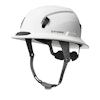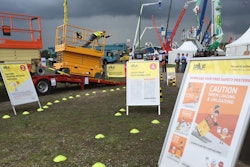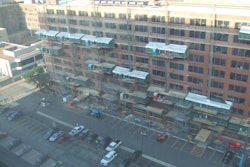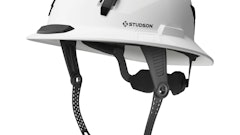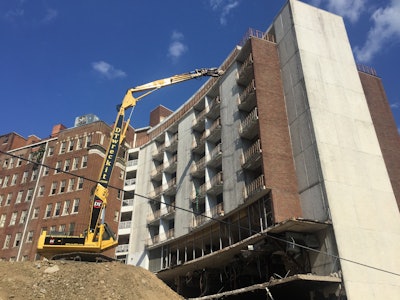
By Alexa Schlosser
Hot Springs, Arkansas, is mostly known for its — you guessed it — hot springs. But, up until November of last year, the city was also home to one of the most famous hotels in the South. Built in 1882, the Majestic Hotel (originally named the Avenue Hotel) was notable for its service that transported guests to the city’s renowned bath houses every five minutes. As the years went on, the Majestic grew and gained a reputation for housing major league baseball teams during spring training and, later, soldiers during World War II.
Despite attempts to change with the times — including a brief Hawaiian-themed era in the early 1960s — the Majestic closed its doors to the public in 2006. The goal was to eventually open the hotel back up, but the death knell was tolled when a fire destroyed a large portion of the building in 2014.
RIPE FOR AN RFP
In 2015, the city acquired the property with concerns of constant vandalism and entry by pedestrians. There was great fear that the remaining structures might also catch fire. The city performed site assessments and determined that the hotel was a hazard. In the summer of 2016, the city released a request for proposal for demolition of the Majestic Hotel, Red-Brick, Lanai Tower and Lanai Suites to complete the site clearance of the main intersection in downtown Hot Springs.
“The state of Arkansas RFP process utilizes a point system for review of the response packages from participating bidders,” says Lora Lockhart, director of project development with DT Specialized Services, the National Demolition Association (NDA) member that won the bid. “Many factors were involved in the selection process — most notably, qualifications of similar projects, bonding capacities, team resumes, means and methods, and the overall proposed cost for demolition,” she says.
DEMO BEGINS
On July 5, subcontractor Snyder Environmental performed asbestos abatement. Upon completion, DT Specialized Services began demolishing the three-story-tall Lanai Suites on the west side of the site, which was not encompassed by nearby streets.
“Once [the Lanai Suites] was leveled, that allowed us to utilize the hard fill as a means of export and site access for the larger equipment. We used it as a pad for the high-reach equipment to demolish the remaining nine-story structures (Red-Brick and Lanai Tower),” Lockhart says.
The Lanai Tower was demolished next and was composed of post-tension concrete and structural steel on top of a two-story parking garage.
“The tower overlooked both the city street and main state highway, making this the most stringent and important structure of them all,” Lockhart says.
Once the tower was on the ground, the old Red-Brick section took precedence in the week following. The original Red- Brick section was demolished with the high-reach machine, as well, as it was a nine-story structure comprised of cast in place of concrete columns and masonry.
The crew size varied throughout the project. “During the machine demolition process, two superintendents were on-site at all times, along with three heavy equipment operators, two ground men, an on-site mechanic and service truck, as well as two additional ground men for traffic control,” says David McAfee, president of DT Specialized Services.
By Oct. 6, the final portion of the Red- Brick section had been demolished. The export of debris, steel and hard fill was completed on Nov. 7, three weeks ahead of the anticipated completion schedule.
“DT utilized all company-owned equipment, ranging from skid steers, hydraulic excavators and high reach machinery with shears, grapples and bucket attachments,” she says. “The city of Hot Springs utilized its trucks to haul debris after accepting a deductive cost for such in the RFP.”
UNIQUE ASPECTS
As in most cases of high rise demolition projects, the usage of a high-reach machine was determined to be the most effective and safe method for dismantling the structures that exceeded four stories, Lockhart says.
And while the project was completed safely and on time, that doesn’t mean it presented no challenges.
“The project site was surrounded by city streets and a main state highway as a means for a main entry to the city,” McAfee says. “Throughout the project, we placed traffic control devices and manpower for traffic shut down while strategic demolition activities were taking place. In addition to the tight site conditions, a large, old oak tree survived our precise demolition process and maintained its placement.”
Another unique aspect of the project was the salvaging of the old Majestic Hotel sign that faced the city. The sign was mounted on the roof of the Red- Brick section and was dismantled and placed on trucks for the reuse of the sign at a later date.


